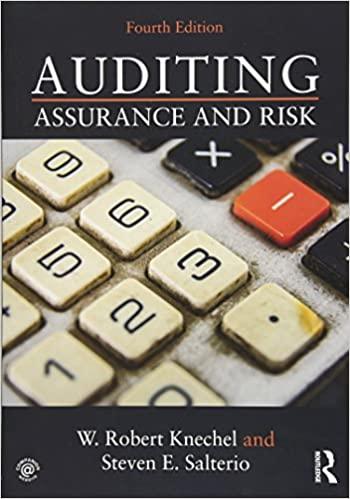Question
46. Say which (which) of the following three statements is (are) true: ONE: 20% investment is an automatic criterion; that is, if the investment is
46. Say which (which) of the following three statements is (are) true:
ONE: 20% investment is an automatic criterion; that is, if the investment is less than 20%, the equity method cannot be used.
TWO: If the investor owns 49% of Investee's common stock, they have to use the equity method regardless of the circumstances.
THREE: The only way an investor can gain control over another company is by acquiring more than 50% of the common stock.
A. One, two and three
b. only THREE
c. Two and three
d. none of the three
47. The Fair Value Option (FVO) may be applied to the following investments:
A. Classified as hold-to-maturity (HTM)
b. Classified as available for sale (AFS)
c. Accounted for under the equity method
d. All of the above
48. Once the market value option (FVO) is adopted, the decision:
A. it is irreversible
b. It is irreversible for heritage values only
c. Is irreversible for debt securities only
d. It is NOT irreversible, regardless of the type of investment,
49. Say which (which) of the following three statements is (are) true:
ONE: Investments that are accounted for using the equity method cannot have the market value option (FVO) applied to them.
TWO: Investments accounted for using the equity method are not subject to impairment analysis.
THREE: An investment that is being accounted for under the equity method will have to be accounted for at market value if the investor loses the ability to exercise significant influence.
A. One, two and three
b. only THREE
c. Two and three
d. none of the three
Step by Step Solution
There are 3 Steps involved in it
Step: 1

Get Instant Access to Expert-Tailored Solutions
See step-by-step solutions with expert insights and AI powered tools for academic success
Step: 2

Step: 3

Ace Your Homework with AI
Get the answers you need in no time with our AI-driven, step-by-step assistance
Get Started


